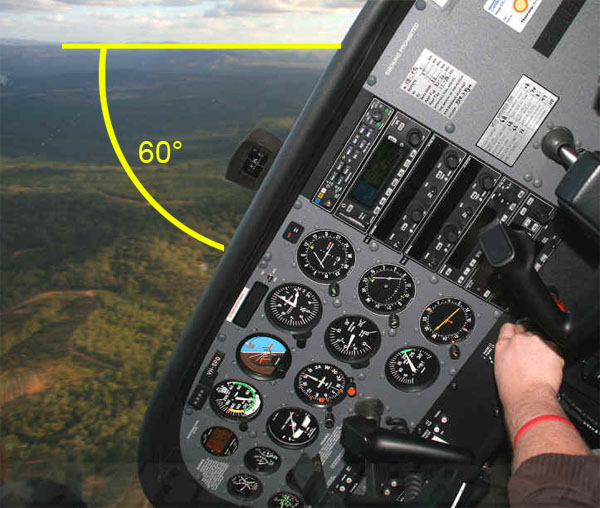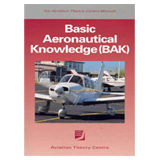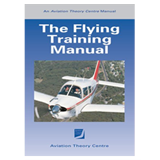[wp_eMember_compact_login]
Steep Turns
Welcome back into the training area, you’re probably happy to have a break from circuit training by now!
Now that you’ve accumulated 2 hours of Solo circuit flying, it’s time for the home stretch of the RPL syllabus, beginning with Steep Turns.
A steep turn can be defined as a turn exceeding 30 degrees angle of bank. You’ll initially learn to conduct 45° steep turns, and progress onto 60° steep turns as your proficiency improves.
During your Brief, you’ll learn the following and more:
- Introduction to the aircraft ‘forces’ during a steep turn
- Factors affecting the turning performance of an aircraft
- Techniques to establish and maintain a 45 to 60 degree angle of bank steep turn
Lesson Techniques
There are 3 Steep Turns lessons in total, and they are outlined as follows:
- Flight 1: Learn how to conduct accurate steep turns
- Flight 2: Demonstrate to your Instructor, your ability to conduct safe steep turns
- Flight 3: Solo practice of steep turns in the training area
Flight number 2 is essentially a check flight, where your Instructor wants to see you safely fly to the training area, conduct steep turns and fly back to Redcliffe unassisted. Upon successful completion of this flight, you are able to conduct Flight 3, the solo practice component. The allowable tolerance for a steep turn at the RPL level is plus or minus 150ft from nominated altitude.
Steep Turning is a simple process, but does take more co-ordination than a medium turn. As long as you keep your eyes outside and ensure the aircraft’s angle of bank and nose attitude remain correct and constant, you’ll succeed.
Common errors during a steep turn can include:
- Applying back pressure too early or too late during the steep turn entry (fix: apply back pressure when passing through 30 degrees angle of bank)
- Not applying enough backpressure during the steep turn (fix: take note of how ‘heavy’ you feel when the Instructor demonstrates a steep turn, if you don’t feel the same sensation when it’s your turn, then you need more backpressure)
- Incorrect angle of bank during the steep turn (fix: keep eyes outside and don’t let angle of bank change)
- Overbank past 60 degrees leading into a spiral dive (fix: learn unusual attitude recovery and focus on maintaining correct bank angle next time)
Here’s an idea of what the 60 degree AoB turn looks like. In fact, the pilot should be able to see the white nose cowling above the black cockpit combing shown. Make sure your seat position is adjusted before you begin the flight.

Resources
Readings
Before attending your Briefing and Lesson, you should have read the following:
- The Flying Training Manual – Chapter 15
- Basic Aeronautical Knowledge (BAK) – Chapter 6, Steep turning pages. Continue reading through textbook


Useful Links & Files
Sample Radio Calls for RPL
Download 705.04 KBCircuit Joining Procedures
Download 2.23 MBInstructor’s Tips
- As with previous lessons, it’s better and actually easier if you look outside during manoeuvres! Don’t get stuck watching the instruments.
- Once the turn is established and you’ve centered balance ball, you can forget about it – it won’t change until you change the angle of bank
- Be sure to look out not just before your turns, but DURING them also
- Once you’ve set the angle of bank and backpressure, lock your arm against the door to help maintain the aircraft’s attitude
Questions
This section gives you an opportunity to search for information, which is a skill that will come in handy during your training. Use resources such as your text books or the Internet to answer the following questions.
- An important part of steep turns is unusual attitude recovery. Can you state from memory, the correct recovery techniques? (read the blue Flying Training Manual)
- What are the practical uses for a Steep Turn?
- What is the radio call you should make when departing the circuit in VH-RAQ, heading for the training area?
- What is the maximum crosswind capability for your aircraft? (Check the POH)
- What does the yellow arc on the ASI signify? Can you fly safely in that speed range?
- If you turn off the Master switch in flight, how will the engine be effected?
- What is the stall speed for your aircraft in a 45 and 60 degree bank turn?
Learning Objectives
By the end of this Briefing and Flight, you will be expected to be able to:
- Establish, maintain and exit steep turns
- Recover from unusual attitudes that may result from a poorly executed steep turn
- Execute all required radio calls from startup to shutdown
